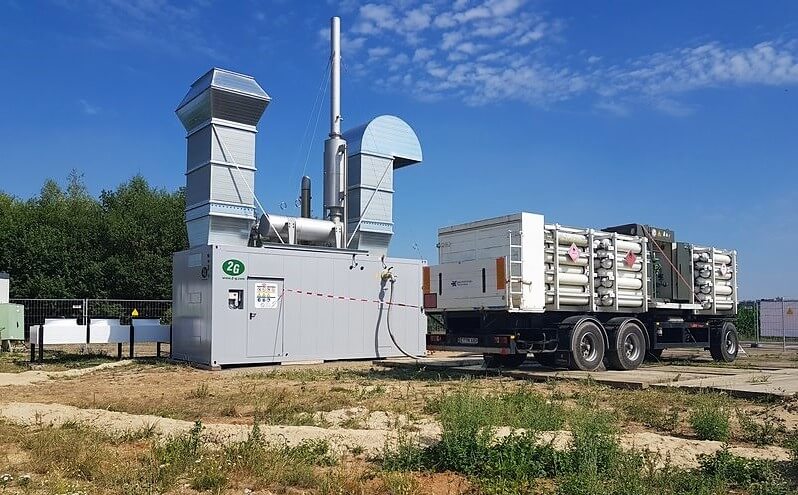Private solar power systems, communal wind turbines and biomass power plants generating the supply of power and heat locally: Decentralised electricity generators can play an important part in the energy revolution. But with their intricate and often volatile products, they can pose a considerable challenge for network operators. For when it comes to stability in the power supply system, supply and consumption must balance each other out. One solution could be ‘virtual power plants’. They control the supply of electricity from renewable energy sources.
If the expansion of renewable energy continues at the current rate, the energy infrastructure of the future will soon need a new generation of power stations – which will be virtual. New small-scale and micro plants are emerging daily, which remotely feed their electricity from renewable energy sources into the grid. However, a reliable electricity supply can only be guaranteed within a stable power supply system, and this means that the same level of electricity must be consistently supplied to the system as is withdrawn from it. Every kilowatt hour, which is supplied to the grid at a given location, must be withdrawn from the grid at another location, and vice versa. The margin of error is limited and a major imbalance could lead to a blackout.
‘Virtual power plants’ could provide relief. They themselves do no produce electricity, but simply coordinate the supply and consumption. To achieve this, individual generator and consumption systems as well as storage facilities are digitally aggregated into one combined network. This creates an electricity pool, which – ideally – incorporates various types of plants such as wind farms, hydroelectric power plants, photovoltaic systems, fuel cells, CHP stations and biogas plants. A central platform, which controls the plants, plays an integral part in the resulting interplay.
Flexible consumers in demand
In order for the whole system to work, the virtual power plant must always know how much electricity the connected users could feed into the grid at any given time and how high the consumption will be. This means the information must thus be exchanged in all directions, nigh on around the clock, via different intersections and systems. In order to achieve this, all users must transmit their data to the control unit in real time, so that the latter can calculate which plants can be kept running, or must be turned on or off, and at which time this is to occur.
The aim ist to ensure security of supply with an increased share of renewable energies. Patrick Kreuel, Project Manager Regionetz GmbH
A constant exchange of data regarding the current situation thus affects the power generators as well as the power consumers. Electricity customers, who are flexible in terms of timing, can for example increase their consumption at times when production is also increased, i.e. during periods of strong winds, or when consumption decreases elsewhere, for example if an industrial company which is connected to the network has shut down for the evening.
For this purpose, industrial consumers are particularly intriguing as they can tailor a relevant volume of their consumption to the available supply of electricity. Many industries have the potential to implement this kind of load management. As such, plants which emit process heat, cold stores, industrial shredders, pumps, mills and even interior air conditioning processes, for example, could all be worth considering.
When put into practise this would work as follows:
If numerous wind turbines are rotating at once, the virtual power plant adjusts the performance of a connected biogas power station via a control command, for example. Alternatively, a flexible power consumer could be given the go ahead during times of heavy wind.
If there is not enough power on the grid, the control system perhaps increases the power generation of a participating hydroelectric power station. If it is not possible feed enough power into the grid, the control centre temporarily adjusts the energy consumption of a cold store, for example. In doing so, the virtual power plant is able to offset potential fluctuations of power production before they can cause the public power grid to become imbalanced.
Virtual power plants – a focal point of research
Virtual power stations are becoming the subject of ever more research projects due to their potential for the energy revolution. Two projects, both of which are part of the Climate Protection Competition held by LeitmarktAgentur.NRW, are worthy of note in this regard – one pertaining to heat storage in the private sector, the other on the integration of decentralised power plants.
The EU-backed pilot scheme ‘Virtueller WärmeStromPool’ (Eng.: Virtual HeatPowerPool) is establishing whether night storage heaters (NSHes) can be incorporated as a controllable load into the virtual power plant of Cologne-based energy provider RheinEnergie. The goal is to reschedule the storage phases to correspond with periods of higher energy supply from renewable sources. In this way, CO2 emissions can be avoided and the life cycle assessment of active NSHes can be improved. According to information provided by the Federal Association of the German Energy and Water Industries (BDEW), around one million NSHes are still being used nationwide.
The QUIRINUS research project will run for three years and is exploring ways in which an expansive regional virtual power plant (vkw++) can provide a reliable supply of power and maintain stability within the power supply system of the Rhenish industrial coal mining region in future based on real-time management of the decentralised production, storage and flexible, controllable consumption stations as well as avoid critical conditions in the power supply system. QUIRINUS consists of a consortium of distribution system operators and energy providers, manufacturers and operators of data communication facilities, energy storage and CHP stations as well as two research institutes.
“The control centre is the jewel in the crown of the project”, according to project manager Patrick Kreuel of Regionetz GmbH, the lead company of the consortium. The control centre is where values from the various measuring points within the power grid and extensive weather data come together. This information is then to be passed on to the distribution system operators, who can react accordingly. In addition, experts are researching instances in which power storage units and CHP stations are able to operate as hybrids in order to bridge temporary energy shortages. “The goal is to ensure a reliable supply of power with an increasing proportion of energy from renewable sources”, explains Kreuel.
Power storage units are becoming increasingly important
Despite best coordination efforts, an ever-increasing proportion of volatile wind and solar power means that energy storage systems continue to play a growing part in balancing power grids. Virtual power plants rely on decentralised storage systems in order to provide an operating reserve within a network, i.e. energy to bridge very short fluctuations. As a result, operators of (private) photovoltaic stations can, for example, not only register their modules but also their battery storage units with a virtual power plant. This bridges short-term fluctuations in current frequency.
In 2015, virtual power plants accessed more than 10,000 megawatts of power, according to information provided by the German Ministry of Economics. This is equivalent to the output of around ten nuclear power stations. The relevant technology is also making international headway: It is predicted that virtual power plants could be coordinating 28,000 megawatts of power in the USA by 2028. And in Australia, according to media reports, 50,000 households are being equipped with solar power systems and battery storage units to create the largest virtual power plant project in the world.
In order to better coordinate the variety of electricity sources moving forward, various utilities, together with network operator EWE Netz, are calling for the German government to reserve the 450 megahertz radio frequency for communications between power stations – including virtual ones – and network operators.
Photo credits: Alexander Softog, shutterstock.com

